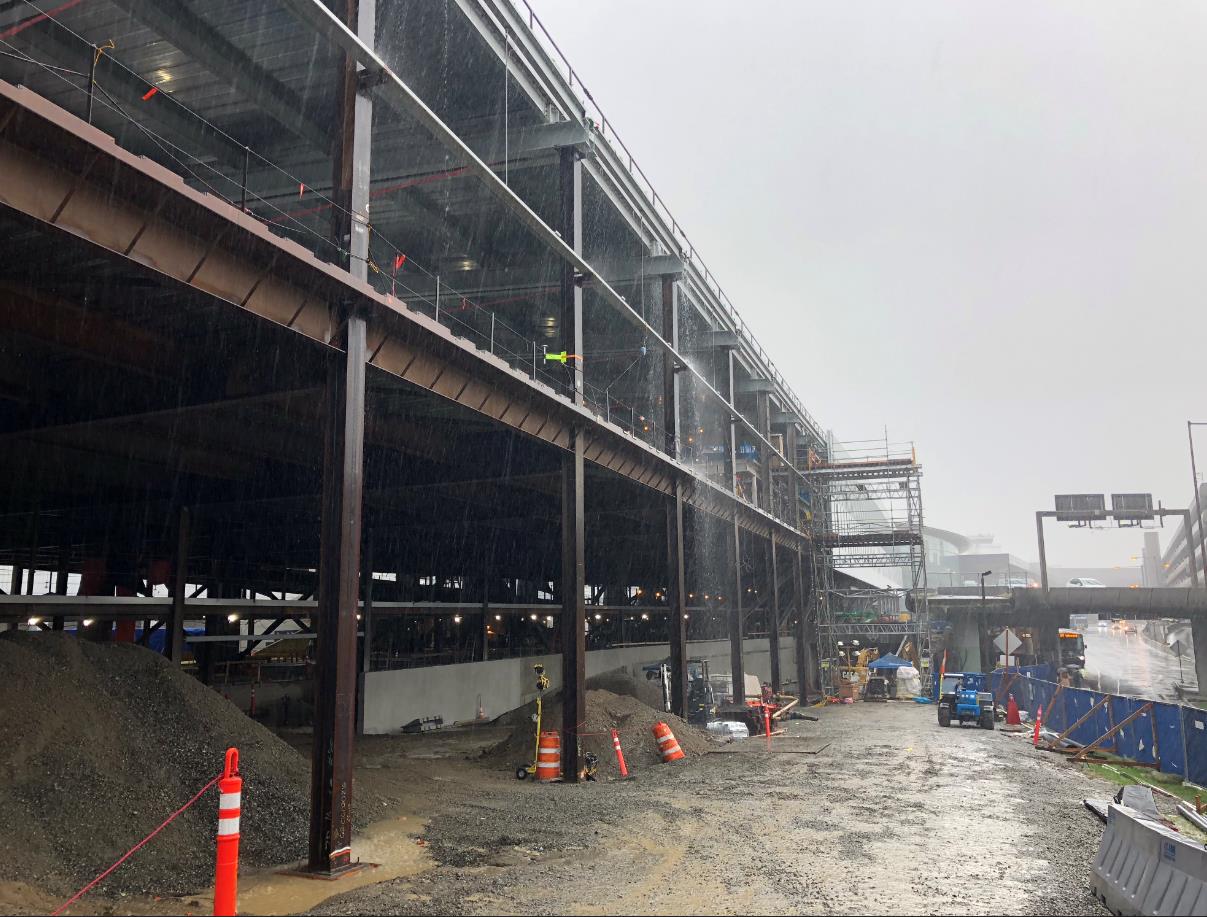This straw wattle on a slope stops rills before they can completely form.
March 31, 2020
Straw Wattle on Slope Stops Rills
March 30, 2020
Before and After
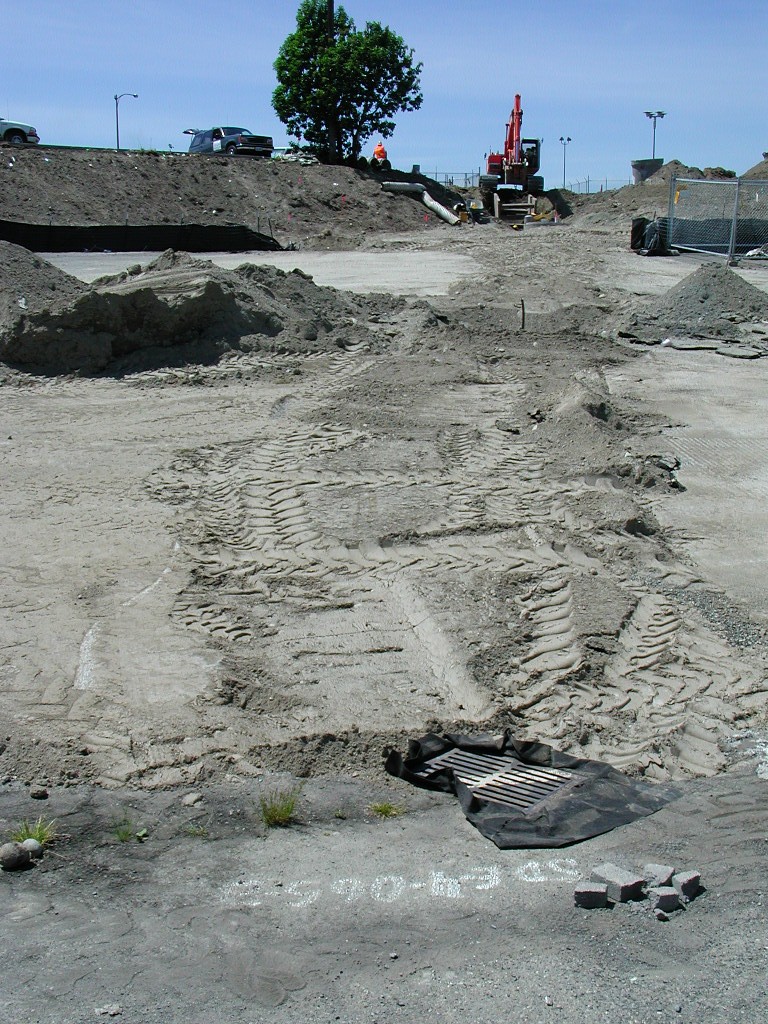
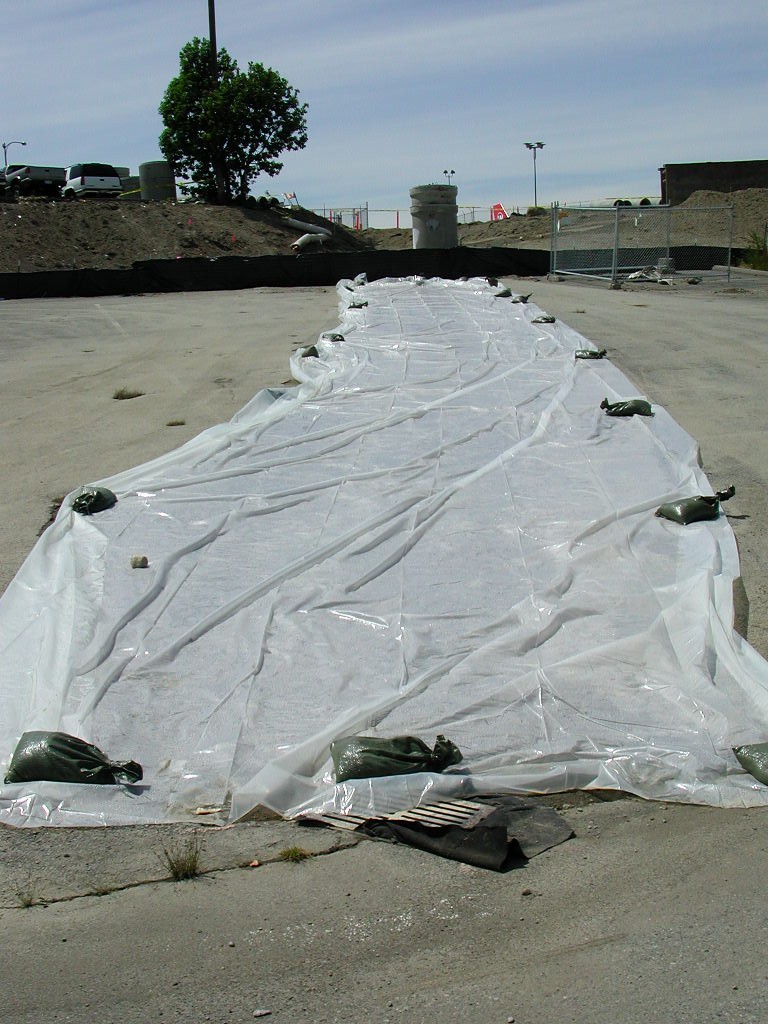
The contractor had to connect a new storm system from up the hill into an existing catch basin in the foreground. After they completed the connection but before paving, they covered the pipe run with plastic and sand bags to protect from dirty water entering the catch basin. Work was completed during dry summer weather. Paving took place a couple of months later.
March 27, 2020
Triangular Silt Dike Construction Entrance
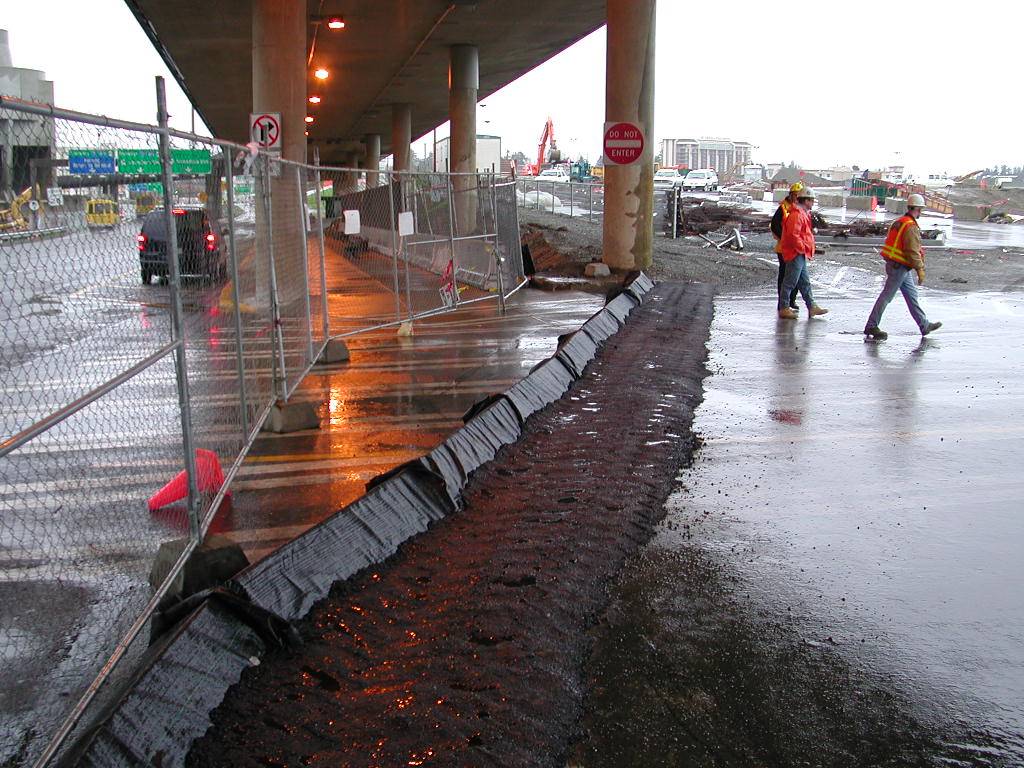
We had two goals: (1) keep dirty site water from draining off site and into the existing storm system; (2) allow access to the project for deliveries. Working together with the contractor, we decided that an asphalt berm alone wouldn’t provide enough protection and if installed thick enough to provide protection, wouldn’t allow for trucks to access the site. We also knew that Triangular Silt Dikes (TSDs) could be driven over but would tend to move if not secured to the existing asphalt. Solution: use both; TSDs to provide adequate protection from site discharges and the asphalt berm to secure the TSD flap to the existing asphalt. This worked well and required little maintenance.
March 26, 2020
March 25, 2020
Native Plant Pollinator Meadow
I planted a native plant pollinator meadow last weekend using native seeds from Northwest Meadowscapes. The area is only 16 feet square but I plan to add on over the next few years. My ultimate goal is to eliminate as much of my half acre field of weeds as possible to cut my mowing to about nothing. Oh yeah, and help the bees.


March 24, 2020
No Dumping Drains to Creek
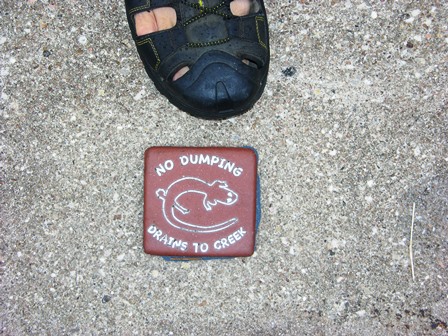
I saw this in Austin, Texas in 2009. We don’t have to worry about salamanders where I come from.
March 23, 2020
Old Silt Fence
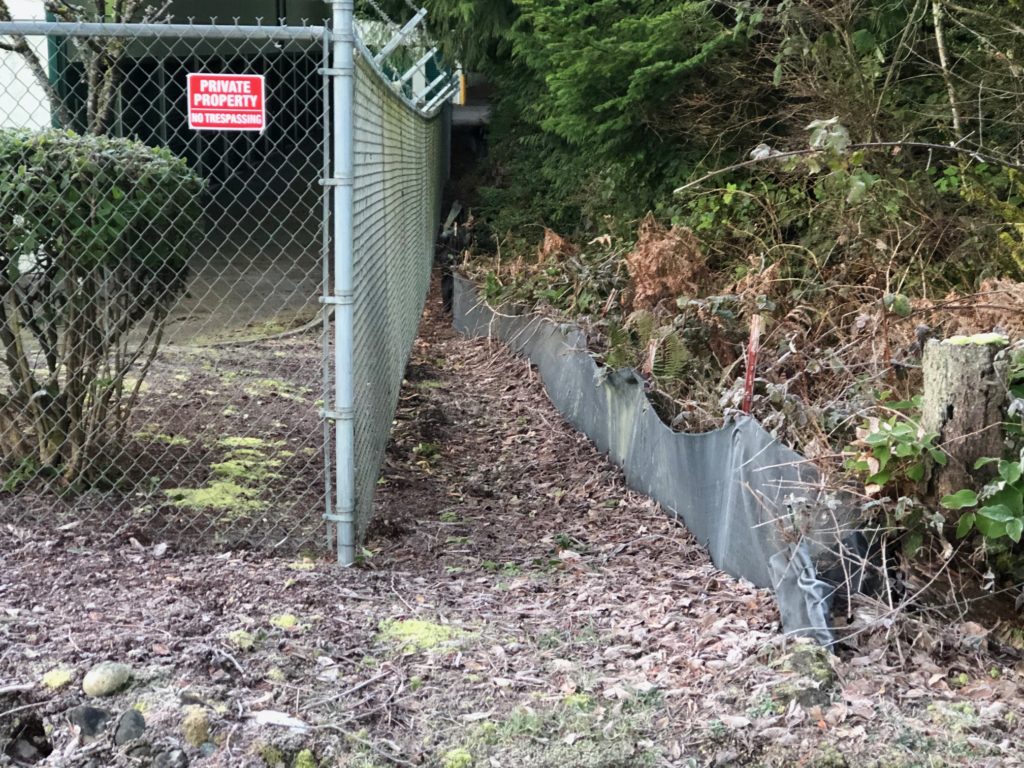
This fence was installed when a storage facility was constructed behind my house. My kids were preschoolers; now they are college age. Why was this installed since everything is level? Why was it never removed? Was this the right choice for a perimeter control BMP? Silt fence is the “go-to” perimeter control. Should it be? There are so many options available: Forest duff and vegetation berm, burlap silt fence with wooden stakes, compost berm, straw wattles, all of which could be left in place to biodegrade after the project is completed.
March 20, 2020
It’s in Here Somewhere
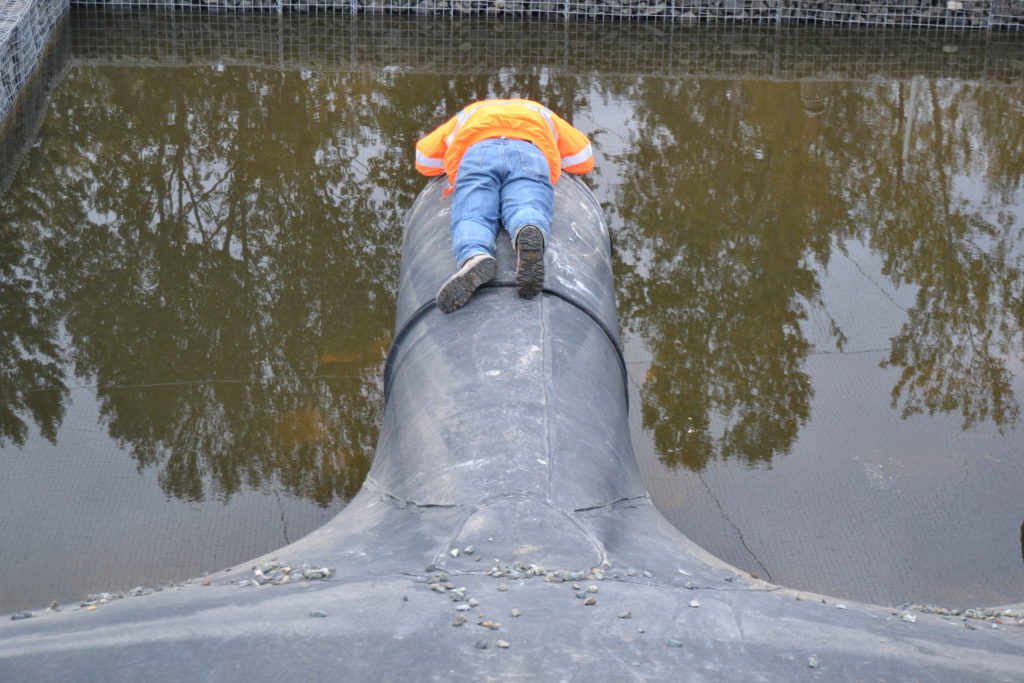
You can’t tell from the photo, but the outfall pipe is bent upward several feet. This pond was used to contain dirty construction site runoff until it could be treated and discharged, but allow for emergency overflow. To accomplish this, the contractor was required to install elbows and risers on the pond discharge pipes; they failed to properly secure them, only using cables tied to “eco blocks” on top of the pond (you can see the cables angling to the left from the risers). We suggested that they might want to add some weight to the pipes and plates at the bottom of the risers such that it would be impossible for them to move. They didn’t, we had days of rainfall, the pipes lifted and broke the connections to the next pipe sections, located well back in from the liner-covered slope. This required a significant amount of work to repair, including liner removal, excavation, pipe replacement, installation of controlled density fill, then hiring a specialized company to re-install the liner. The contractor paid the entire bill.


March 19, 2020
New Storm Manhole
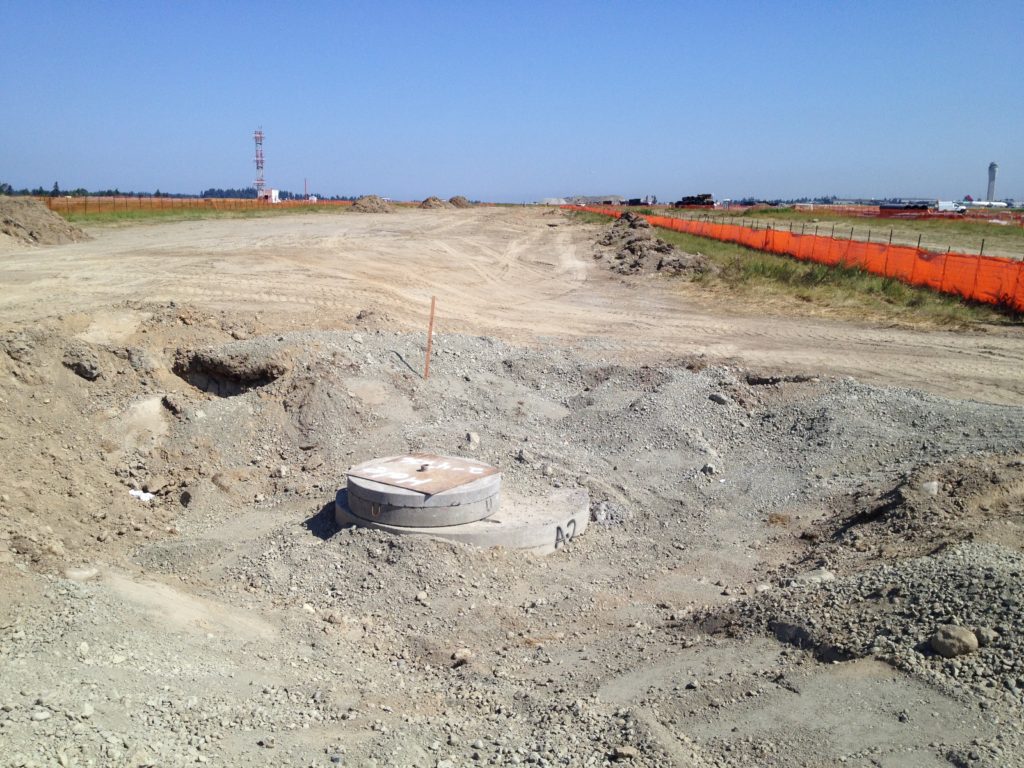
Questions to ask: Is this an existing manhole? If it is, is it connected to the storm system? Is this a new manhole? Is it connected? Is everything grouted? Since this is below existing, bare grade, any water that drains to this manhole will be very dirty. If the system is live, and the manhole is not grouted, all of the dirty water will end up somewhere it shouldn’t.
March 18, 2020
What’s the Point of Sweeping?

What’s the point of sweeping? Okay, lets sweep, pick up as much sediment as we can, drive around a whole bunch, re-apply the sediment, drive around some more, pick up the same sediment… job security maybe. This is the result of not maintaining the sweeper. The door gasket is damaged and needs to be replaced. This sweeper also had rust holes in the hopper door. I told the contractor to remove it from the project and don’t return it until it’s fixed.
